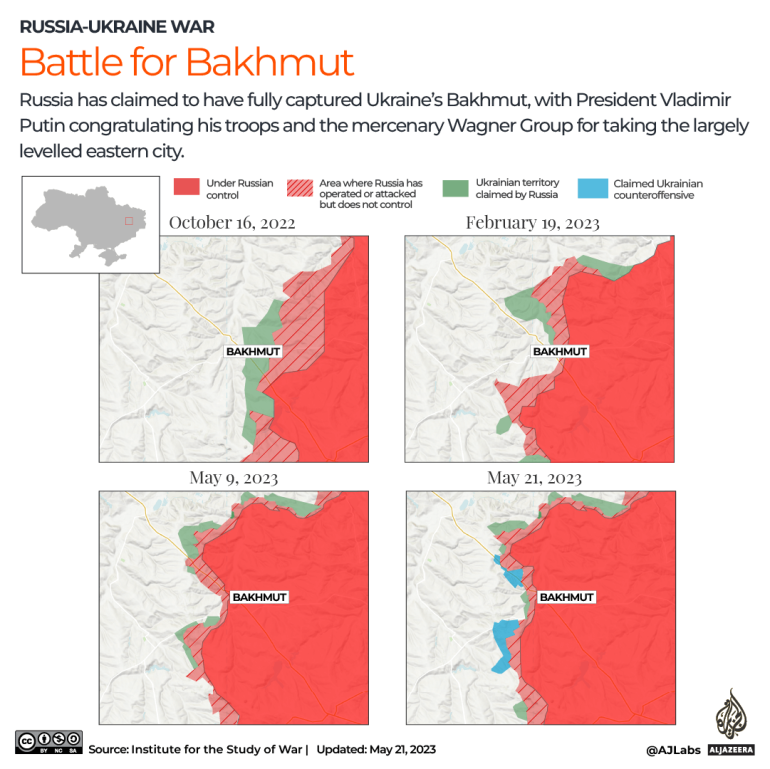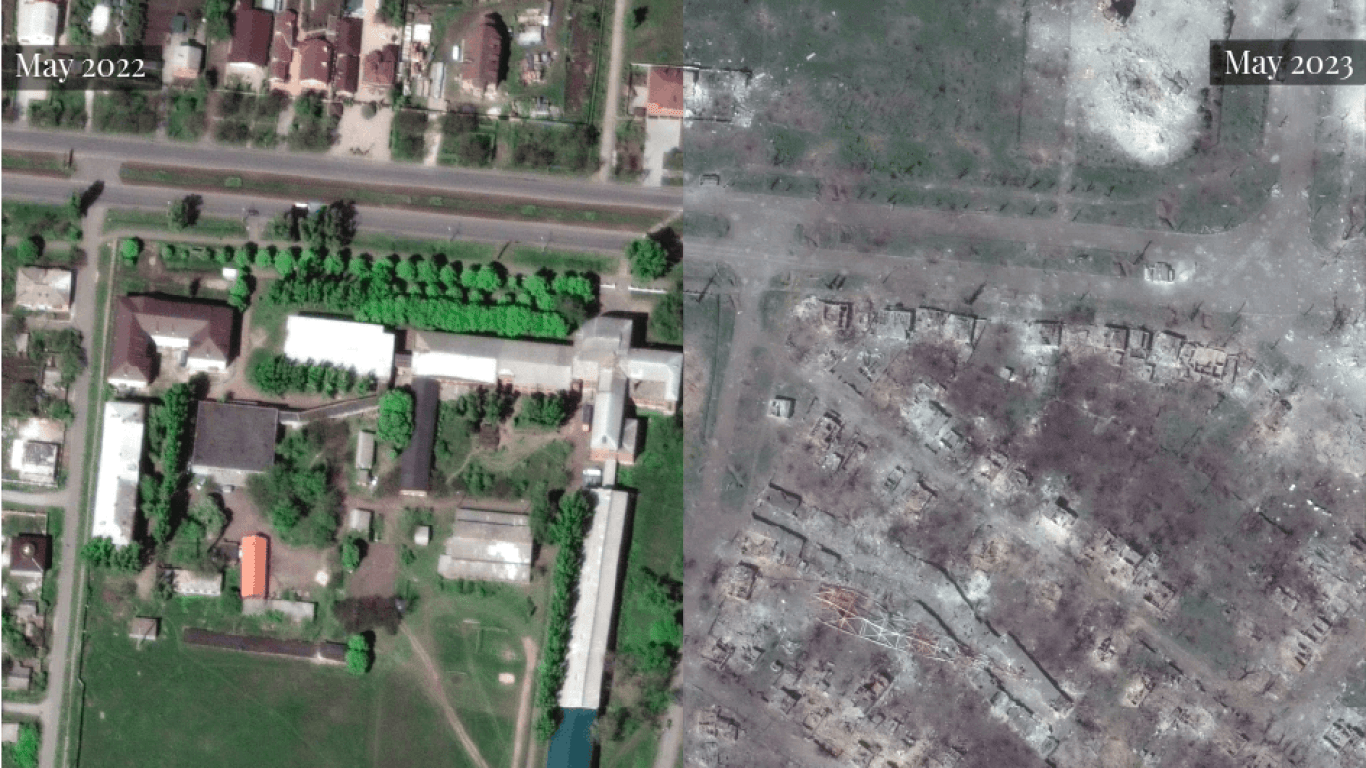Satellite images show scale of destruction in Bakhmut, Ukraine
Published On 24 May 2023
Bakhmut is the scene of the longest and bloodiest battle of Russia’s war in Ukraine.
The 10-month fight has reduced the eastern salt-mining city to a skeleton, with most of its schools, apartments and shops levelled or severely damaged.
Fighting has decreased and Ukrainian forces still control the southwestern edge of the city of Bakhmut, Deputy Ukrainian Defence Minister Hanna Maliar has said.
Russia has claimed full control of Bakhmut, with President Vladimir Putin congratulating his troops and the mercenary Wagner Group.

Source: Al Jazeera and news agencies
